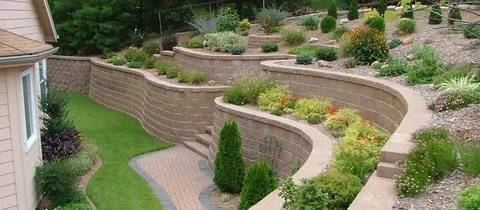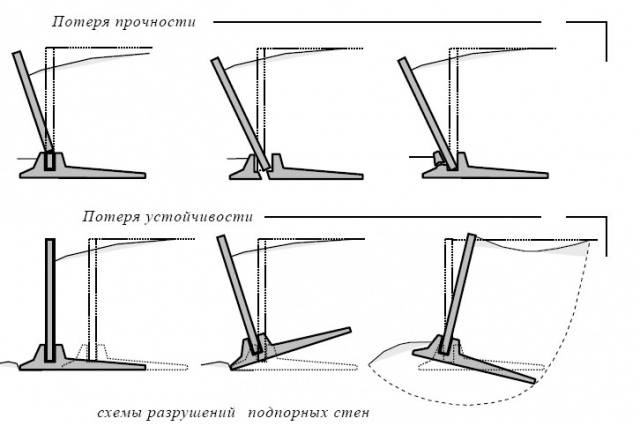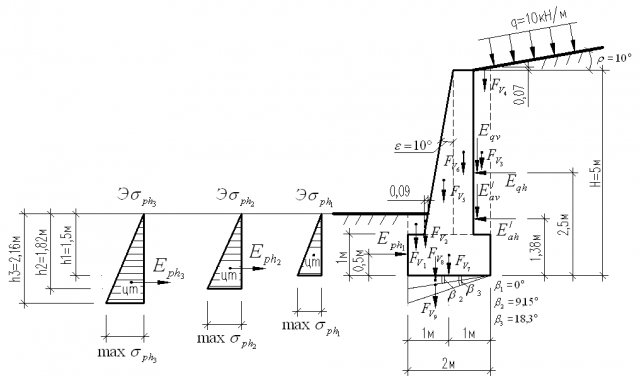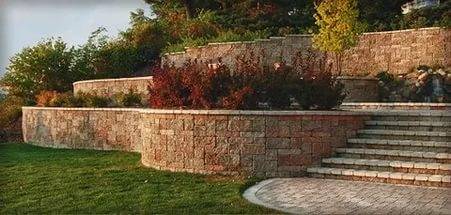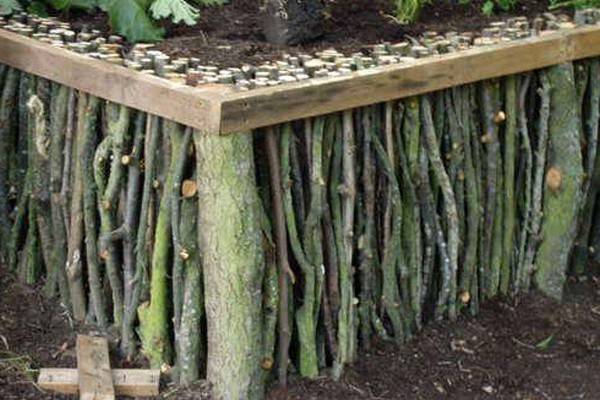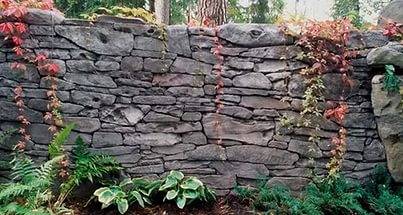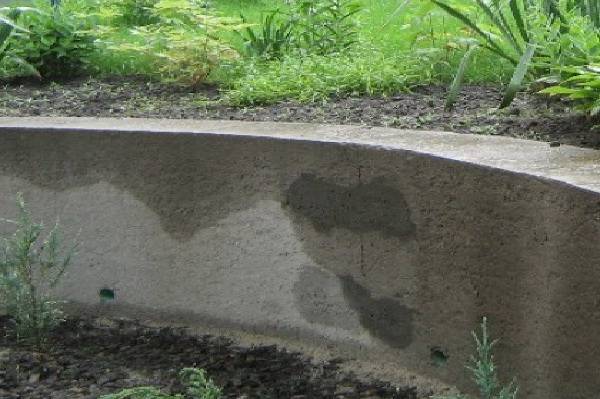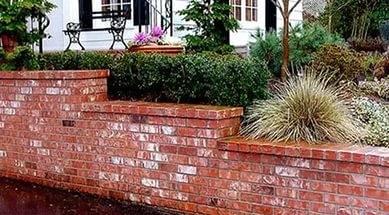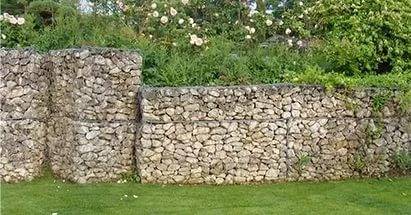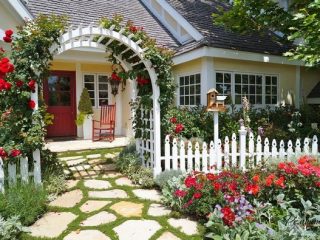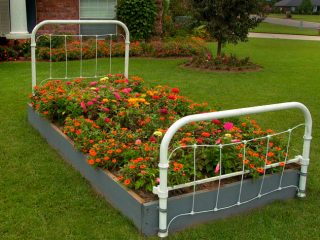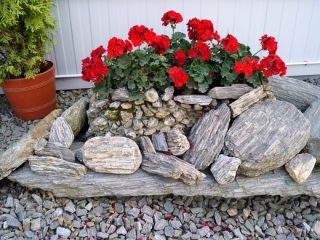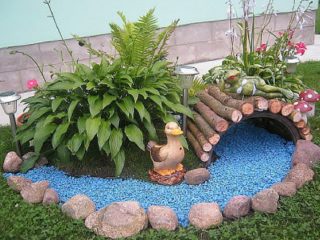Content
The arrangement of a hilly land plot is not complete without the construction of retaining walls. These structures prevent the soil from slipping. Retaining walls in landscape design look good if they are given a decorative look.
The role of retaining walls in landscaping
It is good if the dacha or country house is on the plain. The yard is tiled enough and no worries. To equip a hilly area will have to sweat a little, constructing decorative props. The situation is more complicated in the courtyard located near a large slope. Only serious structures will help to avoid the danger of soil slipping. We'll have to build powerful retaining walls of concrete or stone.
Even if the wall is built as a serious support structure, it should still be used in the landscape as a decoration. After finishing, for example, a decorative stone on a concrete wall, the yard will become more beautiful and richer.
Landscaping with retaining walls allows every piece of land to be used profitably. It is unlikely that it will be possible to grow something on a steep slope, but such a structure will split the useless area into a zone of terraces. Having poured a small layer of fertile soil on the terraces, you can organize beds, flower beds, or simply set up a garden of fruit or ornamental trees.
On a slightly hilly area, a single-tier structure in the form of an ordinary wall will be sufficient. A large slope is turned into a multi-tiered section that resembles steps. The body of the step, that is, the wall itself, keeps the soil from slipping, and green spaces grow in the interval of structures.
The main components of the retaining wall
The retaining wall design is simple. All components of the structure can be seen in the photo. The main structural elements are:
- Foundation or foundation the structure is located underground. This part is subject to the main load from the ground. The stability of the entire retaining wall depends on the strength of the foundation.
- Structure body is a visible elevated structure directly connected to the foundation. The wall is made of wood, brick, stone, concrete and other material.
- Drainage system ensures the drainage of water, thereby preventing the destruction of the wall.
The bedding from crushed stone or gravel helps to provide better stability of the retaining wall.
Self-calculation of the dimensions of the retaining wall
Before tackling landscape design, it is necessary to perform important calculations for the future structure, because in addition to decoration, the wall will keep the slope from sliding.
The standard height of the structure ranges from 0.3 to 1.5 m, although it is not recommended to build a wall above 1.2 m on your own. During the design of the structure, it is necessary to take into account that its resistance must exceed the force of the impact of the retained soil.
To calculate the thickness of the foundation, the conditional coefficient 0.6 is multiplied by the height of the aboveground part. Determine the ratio of the thickness of the base to the height of the wall according to the density of the soil:
- with high soil density, the ratio is 1: 4;
- with an average soil density, a ratio of 1: 3 is adhered to;
- on clay, sandy and other soft soils, the thickness of the base should be 50% of the length of the aboveground part.
For a site with dangerous geodesy, it is impossible to independently design retaining walls; it is better to contact specialists.
Retaining structure design
So, we found out that, first of all, the retaining wall allows you to equip a problem plot of land, and protects the yard from slipping of the soil. However, it is important to pay attention to the design of the structure. The precise definition of its purpose in the landscape will help to give the structure aesthetics.
Capital structures are most often built from reinforced concrete or cobblestone. For their decoration, decorative stone and other facing materials are used. For the construction of decorative walls, any material is used: wood, gabions, decorative bricks, etc.
Even if there are not enough funds to decorate a concrete wall, do not despair. In this case, you need to resort to design tricks. For example, plant ornamental climbing plants. Alternatively, they can be placed at the foot of the wall so that they trudge up the trellis or drop into the ground on top of the structure. In this case, the vines will hang beautifully on the wall.
When special attention is paid to the design of a retaining wall, without limiting funds, the most daring ideas are used. The structure is decorated with lighting, all kinds of figurines and figurines, forging, flowerpots, etc.
Overview of retaining walls made of different materials
In order to better have an idea of the different types of structures, let's look at the retaining walls in the landscape design of a private courtyard in the photo.
Stone structures
Any large stones of natural origin are suitable for the construction of main walls. Using cobblestones of different colors, you can lay out simple patterns like a mosaic. The foundation is erected 3 times wider than the above-ground part. The thickness of the base is determined by calculations. It is better to make a foundation under a stone wall of concrete, and it is important not to forget to add a 300 mm cushion of gravel and sand under it.
After the concrete has set, perforated drainage pipes are laid along the foundation to drain water into the ravine. Drainage can be done without pipes, leaving gaps in the wall masonry. Only in this case, the water will not drain into the ravine, but onto the sidewalk near the wall, which is not always convenient.
Laying stones begins with the largest cobblestones, fastening them with cement mortar. It is important to withstand the slope of the aboveground part from 5 to 10about towards the ground. The finished structure is decorated with climbing plants and other available decorative elements.
Concrete structures
Depending on the properties of the soil, concrete walls are poured with a thickness of 250 to 500 mm. To improve stability, a third of the height of the above-ground structure is buried in the ground. Only a monolithic wall can be strong. The concrete should be poured as little as possible, so you will have to prepare a lot of boards or other material for arranging the formwork.
The concreting process itself is simple, but very difficult. First, the foundation is poured with concrete.Again, it is important not to forget about the 300 mm cushion of crushed stone and sand. If the above-ground part is higher than 1 m, vertically extending reinforcement is embedded in the foundation along the height of the future wall. Further work includes the arrangement of formwork and layer-by-layer concrete pouring.
When the completely finished wall hardens, waterproofing is applied from the side of the soil, equipping the drainage system and backfilling the soil. The front side of the wall is usually finished with decorative stone.
Brick construction
For masonry walls, red solid brick is used. Without a foundation, it is allowed to erect a low decorative structure with a height of 250 mm. It turns out a kind of border, laid on a sand and gravel pillow. Structures with a height of more than 250 mm are installed only on the foundation. The calculation of the dimensions of the base is carried out in the same way as for a stone wall.
If the height of the above-ground part does not exceed 600 mm, laying in a half-brick is allowed. Walls of greater height are placed in brick, that is, with a thickness of about 250 mm. The masonry is carried out on cement mortar. Waterproofing is applied from the back and drainage is laid. On the front side, you can simply do the jointing, or veneer at your discretion.
Gabion construction
A strong and beautiful retaining wall is obtained from gabions. Stones of different sizes and colors are placed in containers made of galvanized mesh. It turns out the same stone wall, only without cement and foundation. As an economy, beautiful stones are placed along the edges on a visible plane, and the void is filled with rubble, broken brick and other construction waste. The gabions are connected to each other with wire brackets, and fixed to the ground with metal pins.
After filling the entire gabion with a stone, close the top cover. There is no need to do waterproofing and drainage. A stone laid without mortar will perfectly let water through.
Wooden structures
The wood lends itself well to processing, has an attractive appearance, but it quickly decays, so it must be well protected from moisture. The whole process of protection involves a number of measures, consisting of impregnating the tree with special antiseptic solutions, covering the inside of the wall with roofing felt, plus a high-quality arrangement of drainage using perforated pipes.
Decorative wooden walls are made from any pegs, planks and other similar blanks. Large retaining structures are installed from vertically or horizontally arranged logs. A trench is dug under the structure with a depth equal to half the height of the aboveground part. The bottom is covered with a 100 mm layer of sand and a 150 mm layer of rubble. That part of the logs that will be in the ground is treated with bitumen, and then lowered into a trench. Between themselves, the logs are pulled together with wire, staples, nails, and the trench is poured with concrete.
The video tells about the retaining walls on the personal plot:
Conclusion
With a little imagination, a retaining wall at your site can be made from any material at hand. Even old car tires are used. When the structure meets all its strength requirements, you can start design work.
